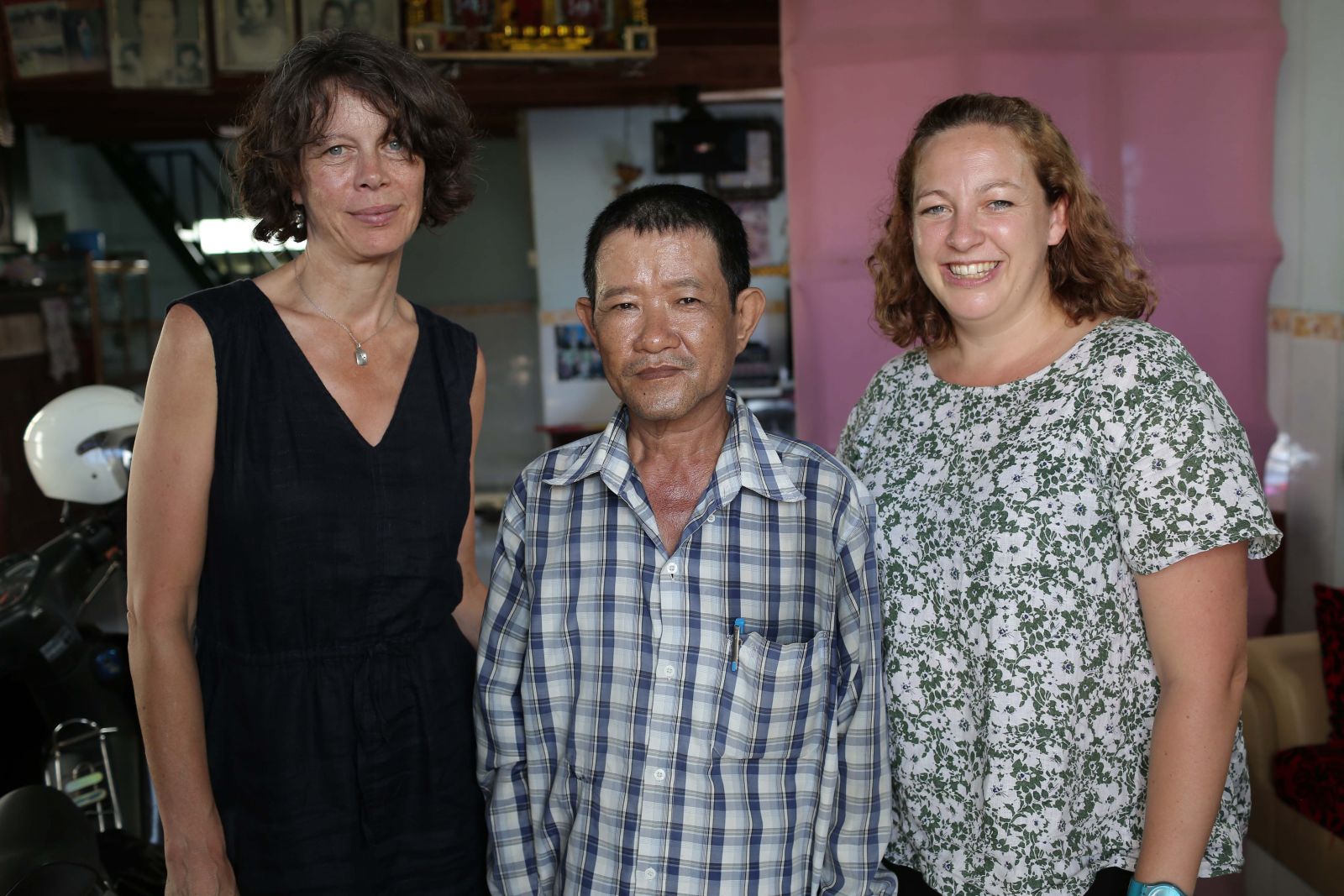In her second blog, TB nurse Sue Dart discusses how community healthworkers in Cambodia are helping to ensure no-one is left behind.
Back in Phnom Penn, a sprawling city, an energy emanates from the myriads of scooters, tuk tuks and street vendors lining the roads. There is obviously investment happening, illustrated by the precarious wooden bamboo scaffolding supporting shells of new apartment complexes and hotels springing up across the city. However, for the majority, these luxury dwellings will be unattainable.

During our time here much has been spoken about the community almost as if it is a homogenous being. The question of community within an urban environment can sometimes be more challenging to define. Certainly from my experience as a TB nurse in London this is something that we struggle with. The population is more transient and fractured. Phnom Penn is no different. Many of the slum dwellers are factory workers, migrants from rural areas or from other countries such as Vietnam. When asked how the community has supported him with his TB diagnosis, one patient replied “This isn’t my community”.
How then have the TB services met this challenge? The Community DOTs Programme, an internationally recognised regime to ensure all TB patients complete their treatment, has been pivotal and helped galvanize community support in this seemingly harsh and unforgiving environment.
Let me illustrate this with the example of how this support has been provided to two drug resistant patients we visited living in slum area on the outskirts of Phnom Penh. Their treatment regime involves them taking tablets twice a day and an injection once a day and requires the intervention of two DOT workers: a trained healthworker and a community volunteer. Based centrally, the trained healthworker will visit the patient in the morning to deliver the medication, observe the patient take their pills and administer an injection, which is given for a minimum of eight months. The second visit is done by a community volunteer. As part of the Cambodian TB strategy over 30,000 volunteers have been trained and recruited to provide community DOTs to TB patients.

One such worker is Lim Kannaa. We meet her as we are talking with Naem who is currently on treatment for MDR-TB. Appearing from the house opposite, she strolls into his. At first, we assume she is a relative that has come to visit. However she quickly corrects our assumptions and proceeds to ready his afternoon medications. A young mother with a six-month old baby, Lim is currently visiting both MDR-TB patients living on the same street. This requires that she visits them on a daily basis for up to two years to ensure they take their treatment, a huge commitment, but one that could help save their lives.
During a meeting with Dr Mao, the director of the National TB Programme (NTP), he called for the world to leave no-one behind and stated that: “ we must reach the whole population. People in rural areas, office workers, prisoners, everyone.” It is volunteers like Lim that can make this happen.